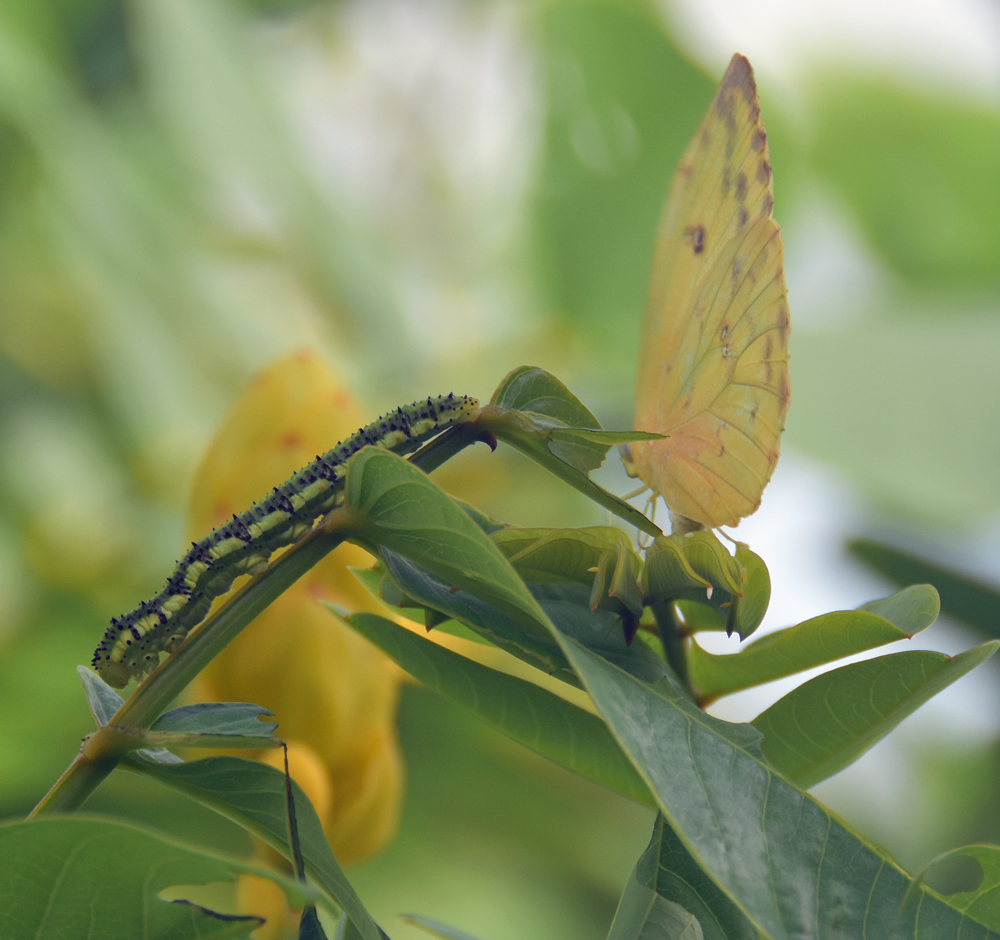Sulphur Butterfly Days in Garden
One of the first beautiful butterflies to appear in my garden 5 years ago was a Orange Barred Sulphur. I quickly did a lot of research on butterflies and caterpillars for my location and discovered that sulphurs are common. So, I continued my quest for more information about their species to include their host plants which are Senna or Cassia plants. The Senna plant comes in a variety of species. I started by buying native senna plants and my rewards have been beautiful.
This year the sulphur butterflies have been especially abundant in number. Daily sightings of a multiple sulphur butterflies bring beautiful brightness and childhood wonder in my garden. I have planted a variety of senna plants over the years and even grow them from seed now. My Sulphur butterflies really enjoy Candlestick Senna, Bahama Cassia, and Privet Senna. And the plants have beautiful bright yellow flowers bringing a extra beauty to the garden. I enjoy a the daily dose of observations watching the sulphurs butterflies.


From early morning I observe sulphur butterflies flying low between the plants ever so spirited. They appear to sense every leaf or plant they fly around, in and out like a beautiful angel. Recently I caught a photo of two mating on top of a large leaf of my philodendron plant. And one just sitting peacefully on a leaf of a Senna plant posing at me with her big twinkling eyes and alert antenna watching back at me.


The Candlestick Senna (Senna alata) plant has grown beautifully in my garden. I started with seeds from last years seed pods, transplanted them as 1 gallon plants and now my Candlestick Senna is an 8 foot tree with a tropical appeal. The senna has multiple branches with veined green leaves that unfold like a fan and spread out into a thick branch with an abundance of yellow brightly colored Candlestick spires. There are multiple small yellow flowers filling each spire. This seems to be a favorite plant for sulfur butterflies to use as host plant. The beautiful yellow flowers attract other pollinators who love the nectar as well. But the ants sure do enjoy tracking up and down the Candlestick tree, my research says nectar glands below the leaves attract the ants and unfortunately many sulfur eggs do not survive. Nature has quite a interesting way of balancing itself…..but that’s another blog post.





About The Author
imombecky
Related Posts
Smoky Mountains Backpacking – Blue Ridge Parkway
My First group Backpacking trip in the Appalachian Mountains with beautiful Fall colors within the…
February 21, 2023Spring and Summer Butterfly Garden News
WOW…the spring and summer of 2022 has been very active season in my…
August 10, 2022
